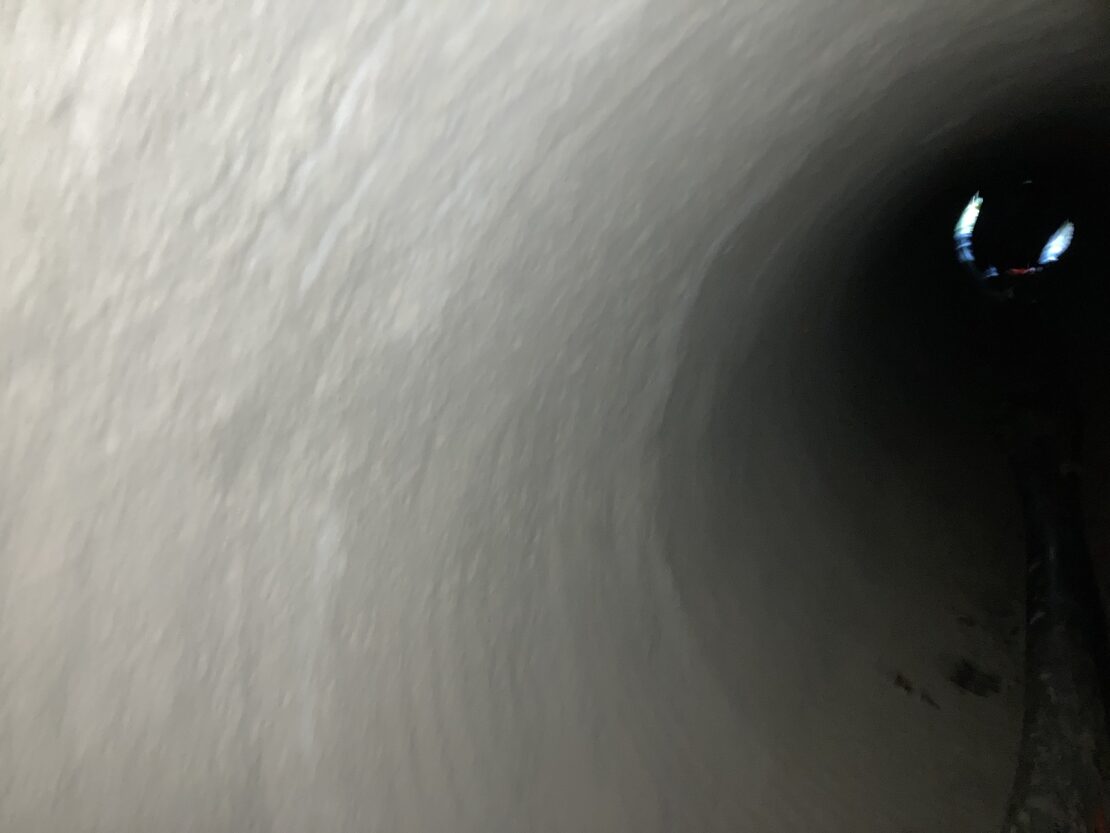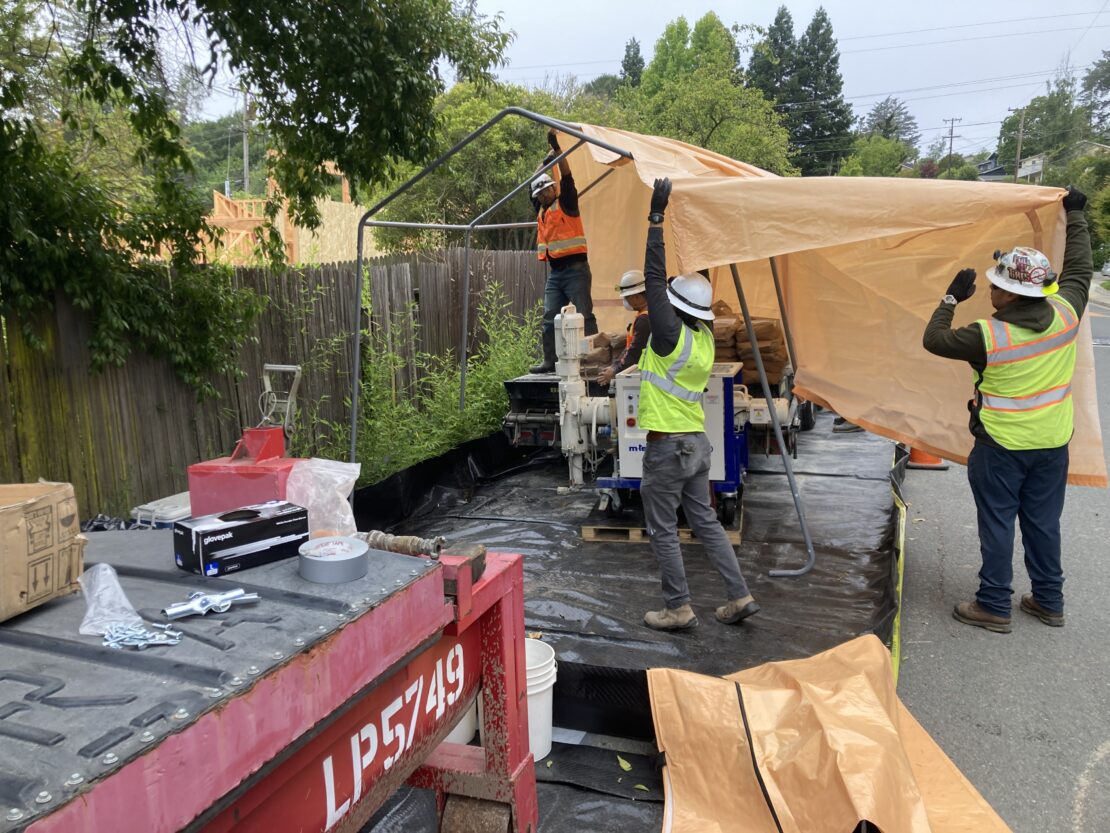CULVERTS
OVERVIEW
The City of Orinda, California sits within the Diablo Mountain Range just 9 miles east of Oakland, California. Local roads wind through the rolling hills next to many main streams that run through the mountain range. These tributaries empty into the Pablo Reservoir and the Upper San Leandro Reservoir.
These seasonal streams are environmentally sensitive for local aquatic life and drinking water derived from the reservoirs. Many large culverts were installed in the 1940s and 50s to take these streams under the roads, which are now showing signs of fatigue and some with their inverts completely corroded. Several were identified for immediate structural rehabilitation.
PROJECT DETAILS
Location: The City of Orinda, CA
Application: Culverts and Arch Culvert
Installation: June 2023
Client: City of Orinda
Installer: National Plant Service
SOLUTION
To resolve the issue, City of Orinda hired HDR, Inc out of Walnut Creek to evaluate which trenchless technology would be a feasible repair option. HDR considered slip lining, cured in place pipe and spray applied geopolymer mortar. Geopolymer mortar was selected based on minimizing environment impact (air, erosion, native vegetation, water and aquatic life), least impact to surrounding area, the ability to reinstate flow through the culvert immediately, maintain hydraulic capacity of the rehabilitated culvert, and overall cost.
The City required a permit from the California Regional Water Board for the project and the work could occur only during the non-rainy season. The permit required ecotoxicity data on the selected material, to determine the time required before the stream could start flowing through the culvert after rehabilitation.
The selected material used by the chosen contractor, National Plant Service, a Carylon Company from Long Beach California, was GeoSpray 61 by GeoTree Solutions. The decision was made based on it having: Acute Toxicity of Effluents and Receiving Water to Freshwater and Marine Organisms, 5th Edition (EPA-821-R-02-012) test results that indicated flow through the culvert could be reinstated after only 2-4 hours of curing. The additional value for selecting GeoSpray 61 is that it is also NSF 61 certified for drinking water standards with high flexure strength, which meant the installed thickness of the material could be reduced, compared to other materials and systems on the market.
In preparation for the rehabilitation work, a diversion was put in place which would run the summer creek flow through a gravity flow bypass pipe without the use of a pumping system, which could negatively affect aquatic life. The additional benefits of the gravity flow bypass were that it did not change the flow of the creek up and down stream during the rehabilitation, did not
increase turbidity (NTUs) or increase erosion from the discharge of the bypass pipe. The bypass was installed directly through the pipe being rehabilitated which allowed for the gravity flow to occur. This was suggested by GeoTree Solutions as the chemical nature of GeoSpray allows for chemical bonding across the interface - even with pours 28 days apart - resulting in a monolithic
structure that other geopolymers and mortars are not able to obtain. The city hired LSA from Point Richmond, California to have a wildlife biologist on site to verify that the bypass and the installation of the GeoSpray 61 was not affecting wildlife.
National Plant Service Manager Danial Solano said “A temporary dam was installed using gravel filled geotextile bags and plastic. This directed the water from the upstream side of the culvert into the bypass pipe. The bypass pipe exited the culvert and drained into the creek downstream.” The project consisted of three culverts at different locations within City of Orinda that each sat on different tributaries. One was a 72 inch by 110 inch acm arch culvert, the other two were cmp culverts measuring 66 inch and 60 inch. All mixing and pumping operations were carried out on a spill control pad within a tarp tent to minimize dust release. A disposal container sat next to the mixing area for the cleaning the hoses that conveyed the material into the culvert to the spray head applying the material.
APPLICATION OF GEOSPRAY 61
GeoTree Solutions engineers calculated the thickness required to adequately line the culverts. They used the distributed beam load over a partial ring model – an equation approved and certified for use by the Water Research Centre (WRc) for geopolymer lining materials.
The thickness applied was 1.5 inches for the 60-inch and 66-inch diameter pipe and 1.75 inches for the 72-inch x 110-inch arch culvert.
The invert was partial deteriorated in two of the culverts. These required filling with GeoSpray 61 to eliminate water movement under the pipe which could cause issues later. Again, GeoSpray 61 was used to eliminate any ecotoxicity issues with stream. All the geopolymer was hand sprayed with the finial ½ inch thickness of the structural rehabilitation spin casted providing a lower mannings ‘n’ value for hydraulic flow.
The construction equipment, which measured 10ft by 75ft, was stagged along the street to ensure it did not affect traffic flow. For the arch culvert the equipment was along the side of a residence driveway (8ft x 35 ft) but access was still possible. Work could be carried out between 8:00 am and 4 pm to eliminate disruption to the residences. Each culvert from mobilization to completion took just five days.
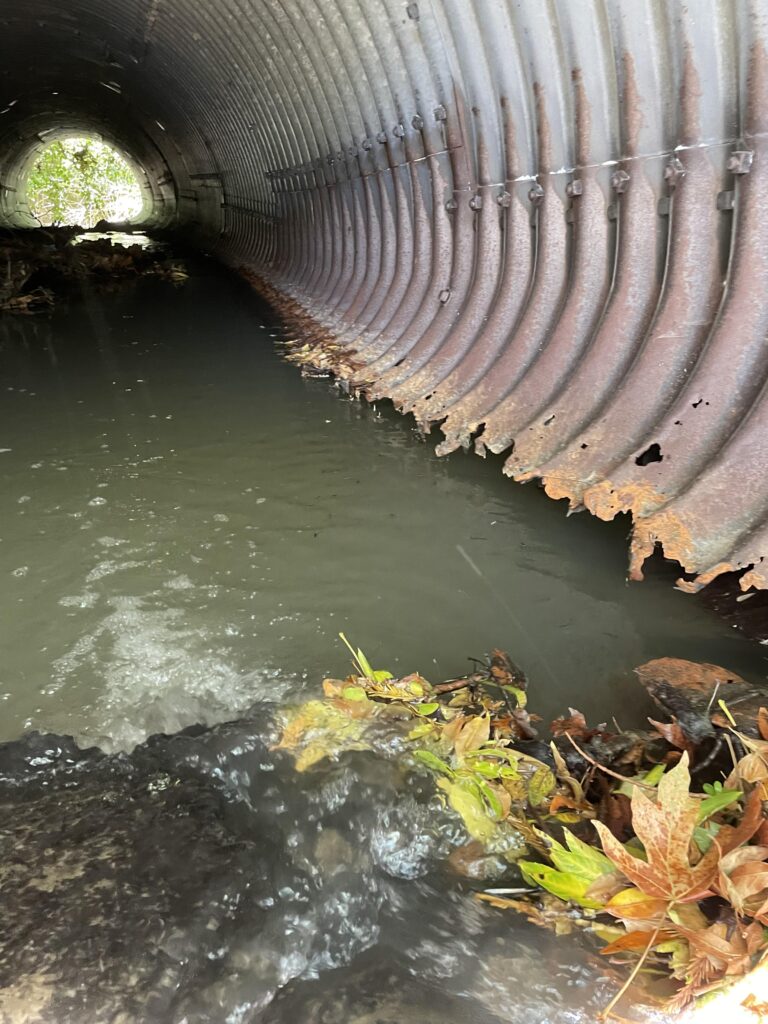
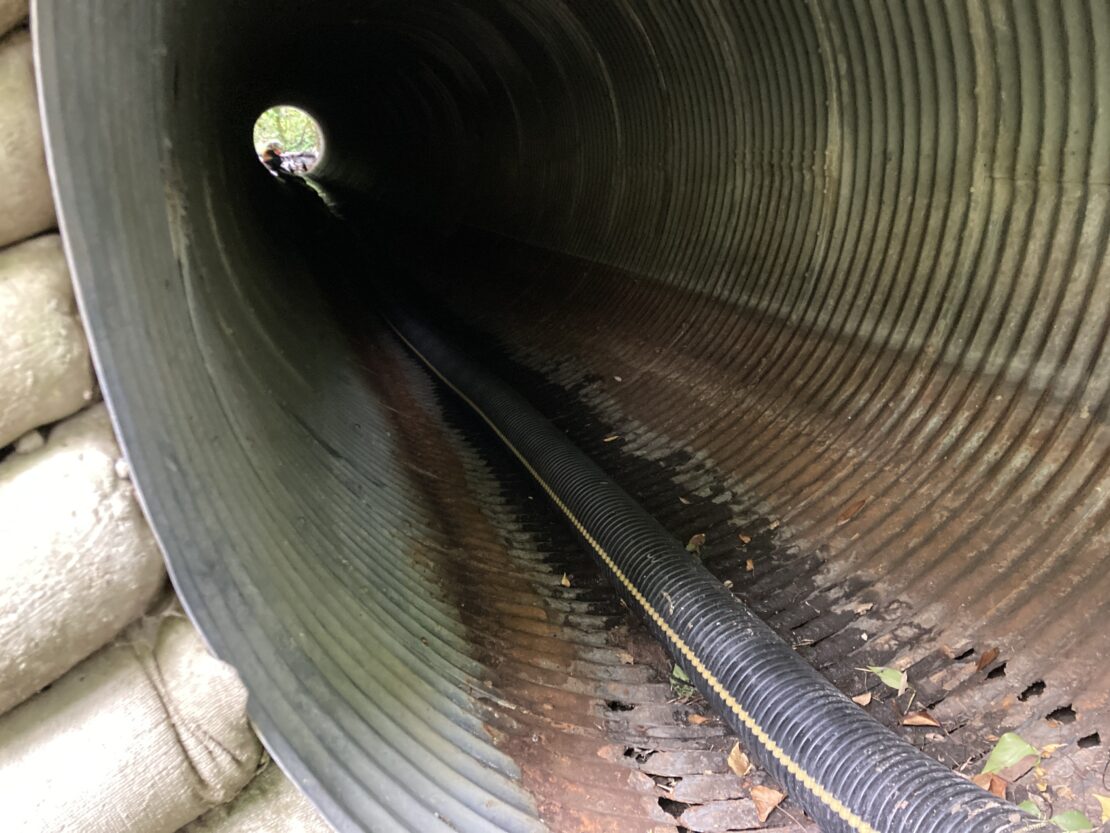
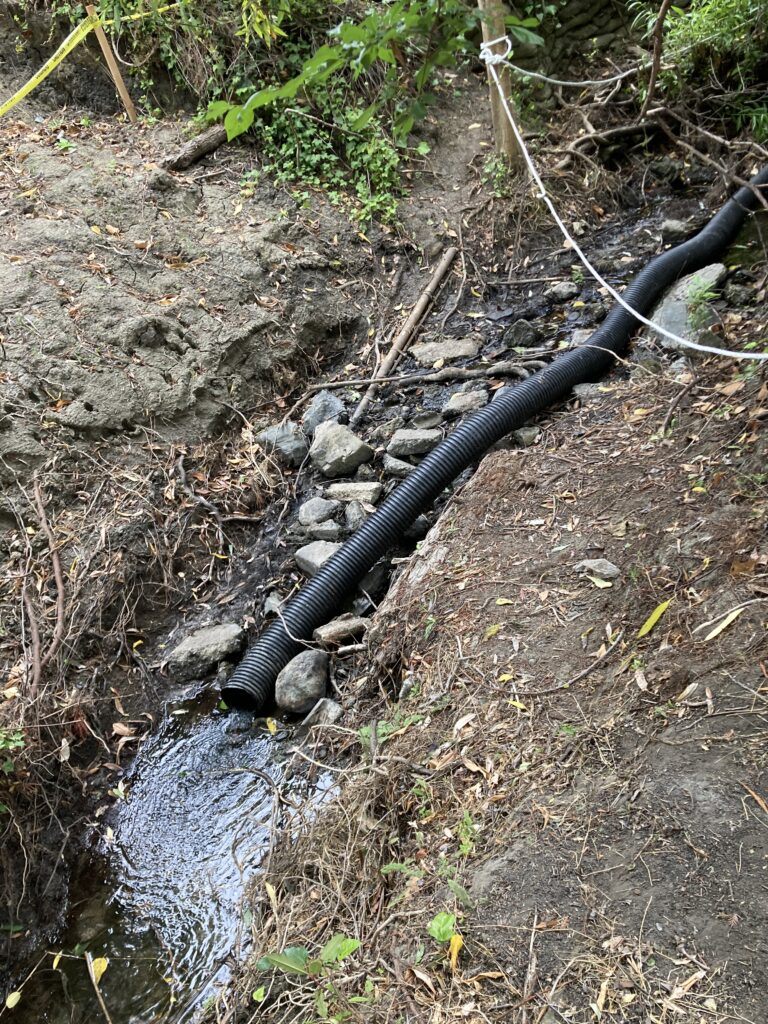
COMPLETED REHABILITATION OF THE CMP
City of Orinda Senior Civil Engineer, Farah Khorashadi oversaw the project. Farah said: “Rehabilitating the culvert using spayed applied pipe lining was the best option given the locations of the CMPs with all the specific environmental requirements that the city had to meet”.
